“Mommy, can I have the rest of the olives?” my tiny 4-year-old daughter asks, standing on the tips of her toes to reach the counter of a tapas bar in Madrid. She has a lollipop in one hand, a treat handed to her by the well-meaning waiter, and I half expect the candy to spoil her lunch (we eat almost no sugar at home). But the sweet is no match for the bowl of briny, salty olives that came with my glass of Rueda. For a while she double-fists the two, alternating tastes of sweet and salty, but soon the lollipop is abandoned and she’s wolfing down handfuls of funky, oily fried sardines and long pieces of jamón.
For the past four years, I’ve been dragging Nora around the world with me, hauling her car seat and bags of toys onto planes at least twice a year, sometimes a lot more. I am a freelance journalist, and I write food and travel stories for a living. I’ve also spent much of the past decade traveling around Yunnan Province, a remote part of China where my husband, Josh, and I were researching and photographing our cookbook, Cooking South of the Clouds—Recipes and Stories from China’s Yunnan Province (Kyle). When Nora was born, we got her a passport and started taking her with us on all of our trips. Where we go, she goes, and what we eat, she eats, or at least tries to.
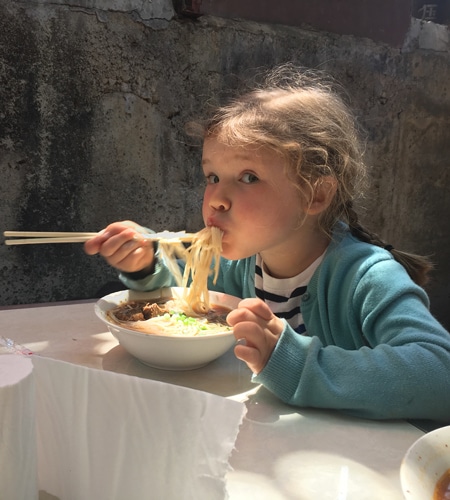
Photos by Josh Wand
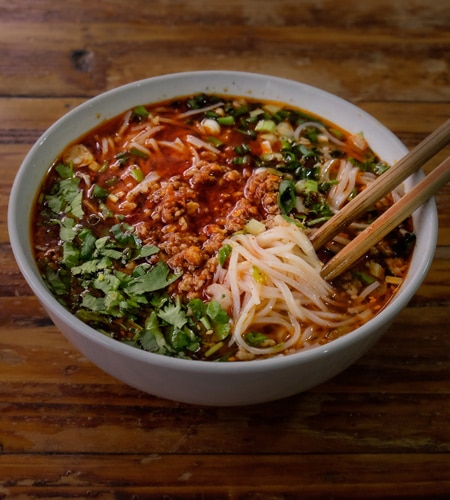
The first couple of times we took Nora to Yunnan, we loaded our luggage with snacks like nuts, raisins, goldfish crackers, and other things we could feed her in a pinch. Yunnan’s foods are phenomenally delicious, but they’re not what American kids usually eat—they’re not even what most people think of as Chinese food. Bordering the Tibetan Plateau, Sichuan Province, Myanmar, Laos, and Vietnam, Yunnan is a place where foods can taste more like they came out of remote areas of Southeast Asia than the foods you’d find in Beijing or Shanghai. And they’re often very, very spicy. But halfway through our first trip, we realized that we didn’t really need the extra snacks. Nora loved the local foods, digging into bowls of rice cakes stir-fried with ham and greens, peeling the crisp, salty skin off of grilled fish stuffed with herbs, and demanding locally-foraged mushrooms at every meal. As long as we remembered to order at least a couple of dishes “bu la de,” (“not spicy”), we were set. Now, after a few trips with us, she likes nothing more than to spear a bunch of noodles with her chopsticks and slurp them up, leaving broth everywhere.
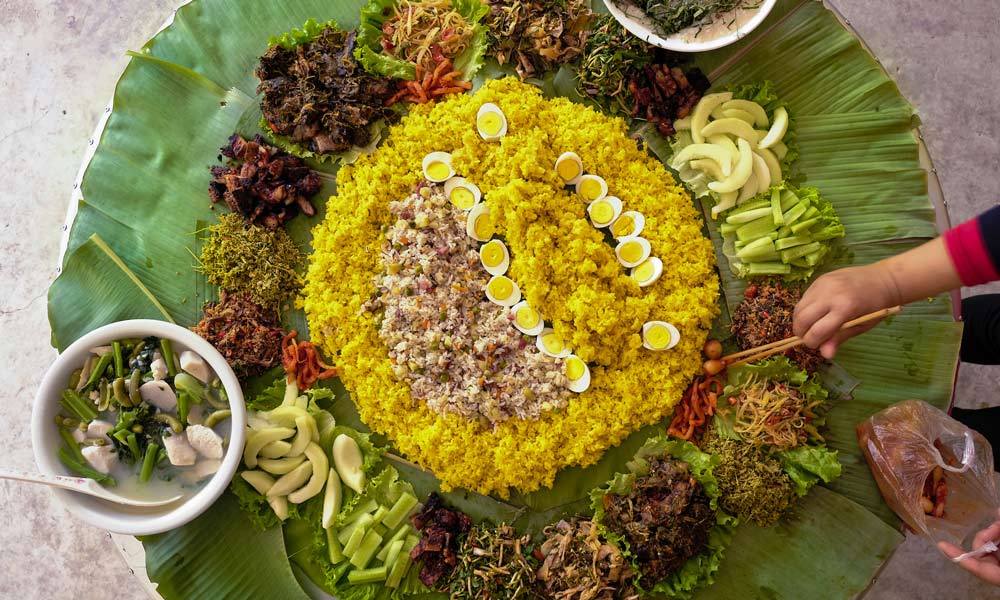 It’s not just eating in China that has expanded her palate. Some of our biggest food breakthroughs have come in places where we could, if we wanted to, feed her more traditionally kid-friendly meals. In Rome she ignored bowls of pasta in favor of chewy rings of grilled squid. In Spain she developed a deep love of steamed clams. Over time, these breakthrough eating moments have taught me that the most important thing I can do to encourage my kid to eat a variety of things is to stop trying to predict what she’ll like. At one meal in a small hotel on the southern edge of Tibet, for instance, I loaded her rice bowl with stewed meat and shredded potato only to discover that her favorite part of the meal was the bitter gourd that she took from my plate.
It’s not just eating in China that has expanded her palate. Some of our biggest food breakthroughs have come in places where we could, if we wanted to, feed her more traditionally kid-friendly meals. In Rome she ignored bowls of pasta in favor of chewy rings of grilled squid. In Spain she developed a deep love of steamed clams. Over time, these breakthrough eating moments have taught me that the most important thing I can do to encourage my kid to eat a variety of things is to stop trying to predict what she’ll like. At one meal in a small hotel on the southern edge of Tibet, for instance, I loaded her rice bowl with stewed meat and shredded potato only to discover that her favorite part of the meal was the bitter gourd that she took from my plate.
These days, at 4 ½, Nora has many of the same food challenges that you find among any kids of her age group—she’ll alternately love a dish and then hate it the next day, is particular about exactly how we cut up her apples, and sometimes seems to want nothing but plain toast. But on most days she approaches the table with an adventurous spirit and the willingness to try at least one bite of whatever is served because, who knows, it might just turn out to be her new favorite thing.
Sita Raiter and her daughter, Isa-Delphine, 6, move to a new country every two years or so, following Sita’s postings with the State Department. Isa has learned to love the foods of Vietnam, where she was born, Dubai, where they spent the past two years, and Dharamsala, India, where she goes to visit her father’s relatives. The family’s next posting will be in Jakarta, Indonesia, where Sita is looking forward to regular access to bubur ayam, stewed rice and chicken topped with crispy fried shallots, celery, pickled greens, and crispy crackers.
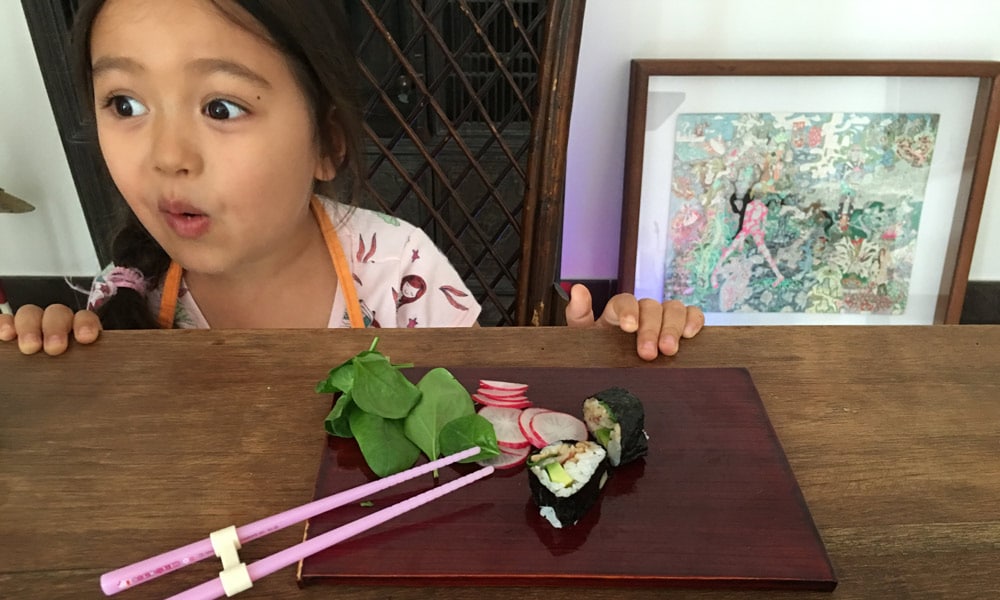
Photos courtesy of Sita Raiter
How our Lifestyle Affects What We Eat:
Our frequent moves means that our food culture changes all the time. When we lived in Vietnam, we ate a wide variety of fruits and vegetables, very little sugar, and a diet of mostly traditional Vietnamese meals like noodle soups and rice with meat and vegetables. Isa’s favorite foods in Ho Chi Minh city were morning glory sautéed with garlic and crab noodle soup. When we lived in Dubai, we ate olives, nuts, dates, salad, and fish at home and South Indian dosas when we were out and about (with the occasional indulgence at Laduree, Fauchon, or Yogen-Fruz at the Dubai Mall).
Tricks for Introducing New Foods:
When we go somewhere new, I like to start by taking Isa through local grocery stores and pointing out new and unknown ingredients while we chitchat about the origins of ingredients and their health benefits. I also like to make new dishes feel exciting by arranging them in a cute way, like using a panda bento box, putting foods in lots of little bowls on a tray, or turning her little tea set into regular dishware for one meal. Finally, I try to instill respect for other people and their cultures and foods. If we’re going to someone’s home, I tell her that while she might not currently like all of the foods, I expect her to show her appreciation for our hosts by eating whatever she is served.


Biggest Food Challenges:
The biggest challenge for us is the way other kids around her eat. Isa hears jokes on the playground about vegetables being disgusting. Similarly, when we eat out all her friends get to order from kids’ menus, and at birthday parties the menu is often pizza, chicken nuggets, fries, and candy. When cupcakes and popsicles are a daily after-school snack at the neighbor’s, it is very hard to make the argument for homemade tabouli with Lebanese zattar when she gets home! And now that Isa is starting to read, she can also see that there’s a hot dog on the kids menu, and not just the antipasti that I claim is being offered.
Most Surprising Thing My Kid Liked:
At her fourth birthday, Isa was thrilled with the quinoa salad cups, canapés with smoked salmon and caviar, and a sugar-free chocolate cake with raspberries—even if her friends were not. She has recently surprised me by loving wakame (seaweed) salad, spicy chorizo, and squid ink risotto.
Jackson Heights, Queens, in New York City, is one of the diverse neighborhoods in the US and a destination for adventurous eaters looking to eat a wide variety of South Asian, Southeast Asian, and South American foods. When Laura Siciliano-Rosen and her husband, Scott Rosen, are not leading local food tours with their company, Eat Your World, they take their kids, Nicolo, 5, and Lorenzo, 3, out to all of the different restaurants they enjoy—and the boys have quickly learned to love them too.
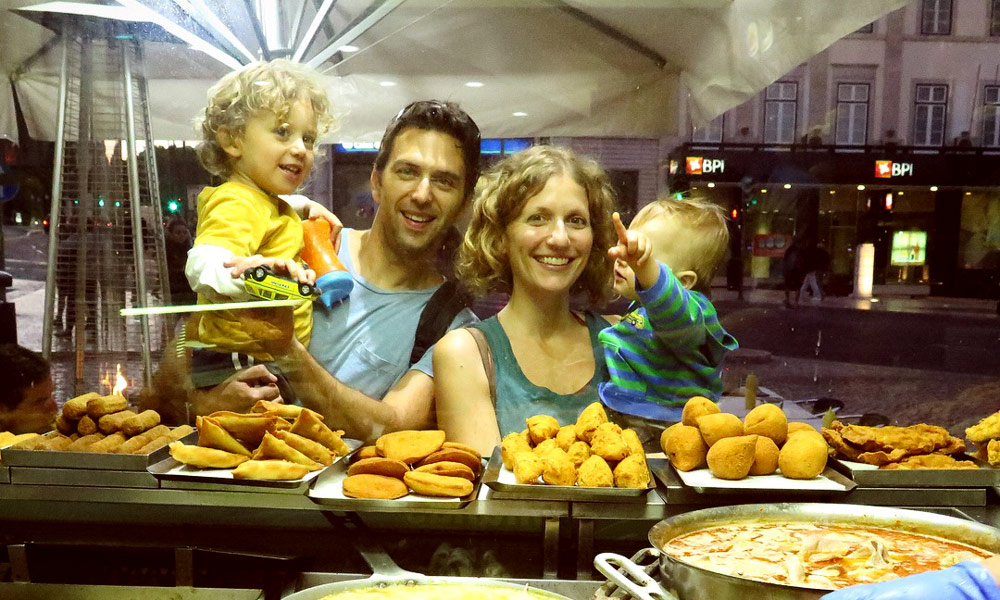
Photos courtesy of Eat Your World
How our Lifestyle Affects What We Eat:
Scott and I knew that we wanted to travel and explore local food with our kids. On the weekend we go out food-exploring together. On any given day we may go out for Malaysian noodle soups, Thai food, Vietnamese, regional Chinese, Tibetan, Ecuadorian, Peruvian, Mexican, Greek, Turkish, BBQ … the options are nearly endless. They’ve also had Portuguese food in Newark and Somali food in Harlem—we just bring them where we want to go and find them something they’ll like. The kids have their favorite neighborhood snacks, including Colombian pan de bono (a cheese bread), Mexican tamales, Tibetan momos, salmon onigiri, and, of course, pizza. We are surrounded by the foods of the world, and we definitely take advantage
Tricks for Introducing New Foods:
I made most of my kids’ baby food, and from the very beginning I tried to introduce lots of flavors—adding cumin to their mashed avocado, cinnamon to applesauce, sage to squash, feta to eggs. Later, I’d use restaurants as an excuse to get them to try whatever I was eating. There’s nothing worse than making (or paying for) a whole meal the kids don’t like, so I think of this as low-risk testing. Nowadays they are pretty open to taking a bite of something if I tell them it’s really good. This doesn’t mean they will like it, but I always appreciate that they’ll try it. I think it’s also helpful that the restaurants we go to typically don’t have American-style kids’ menus; they eat off the regular menu always.
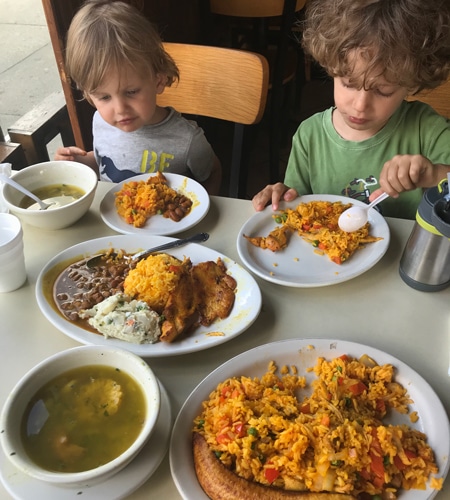
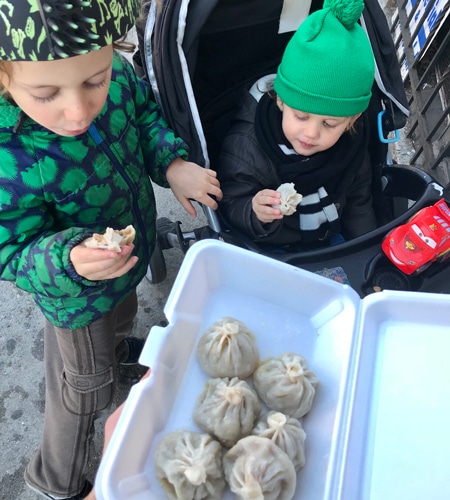
Biggest Food Challenges:
I get the most resistance from my kids when I serve vegetables (surprise, surprise). I wish they liked more raw veggies. I just keep trying by preparing vegetables in a variety of new ways. Another challenge is funnily a side effect of their being adventurous eaters—they don’t like eating the same thing two days in a row! They may devour something at dinner one night and whine about it the next. I’m still trying to teach them about the joys of leftovers.
Most Surprising Thing The Kids Liked:
My five-year-old, Nicolo, has always loved seafood and will eat anchovies out of the tin. Who does that? He surprised our waiter at a Portuguese restaurant by ordering, and then finishing, a giant plate of grilled octopus. Recently we passed a vendor selling stuffed baby squids on the street. He stopped in his tracks and asked for one, then ate the whole thing on the spot.
Ming Li began making charabens, characters made out of food for bento boxes, when her oldest son, Ivan (now 14) was first starting school, as a way to help him with separation anxiety. When her second son, Lucas (now 11), started school, he got the same cute animals, and cartoon characters packed in his lunch. Over the years, Ming, who lives in Singapore, has become an expert in turning her kids’ lunches into cartoon-inspired pictures—and finds that the cute meals are a great way to introduce new foods.

Photos by Ming Li
How our Lifestyle Affects What We Eat:
The unique thing about living in Singapore is that we have lost of different cultures’ foods readily available everywhere. For example, as a family, if we go out to a hawker center for breakfast, my husband can have Malay food like nasi lemak (rice cooked in coconut milk and served with fried anchovies, spicy sambal, peanuts, and cucumber), my boys can eat Indian prata (a pan-fried layered bread served with a bowl of curry sauce), and I can have Chinese prawn noodles all at the same meal.
Tricks for Introducing New Foods:
My boys tend to avoid some veggies, like okra or bell peppers, if I just serve it on their plate, but I find they just eat it up when it’s part of their charaben. I think it’s because the foods look more appealing and the boys are also distracted by the characters and don’t think so much about what the picture is made of.
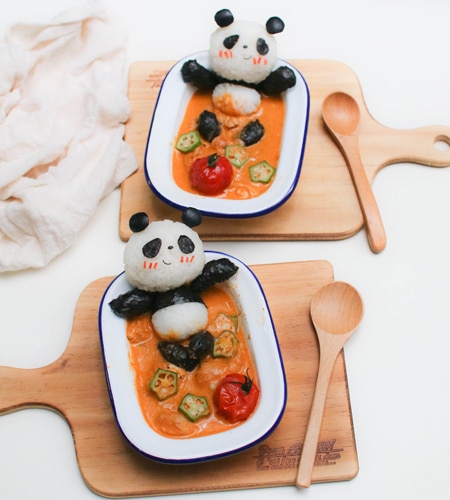

Biggest Food Challenges:
My younger son, Lucas, hated all kinds of vegetables when he was younger and wouldn’t eat them. But I found that by hiding them in the rice balls I use to make the characters’ heads or by sneaking them in meatballs and patties I was able to get some vegetables into his diet.
Most Surprising Thing The Kids Liked:
I was surprised when my kids started eating spicy food because it’s something that I didn’t force on them, it just happened naturally. And recently my older son, Ivan, mentioned that he would like to try fried insects if he had the chance, though that’s not something you find in Singapore.
By Georgia Freedman
Georgia Freedman is a freelance journalist based in the Bay Area and the author of Cooking South of the Clouds—Recipes and Stories from China’s Yunnan Province (Kyle, 2018). An avid student of Chinese food and culture, Georgia has been traveling to China regularly since 2000 in order to learn about the country’s diverse foodways. Georgia’s writing has appeared in the Wall Street Journal, Afar, Martha Stewart Living, Saveur, Roads and Kingdoms, and other food and travel publications, and she was previously the managing editor of Saveur.